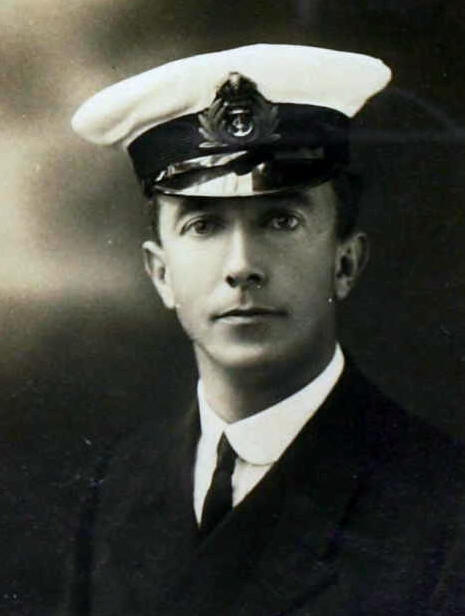Air of Authority - A History of RAF Organisation
 Peregrine
Forbes Morant b: 23 Dec 1883
r: 26 Oct
1910/17 Jul 1933
d: 12 Jun 1955
Peregrine
Forbes Morant b: 23 Dec 1883
r: 26 Oct
1910/17 Jul 1933
d: 12 Jun 1955
DSO
- 1 Jan 1918, Bar - 8 Feb 1919,
MiD - 16 Dec 1919,
.
(RN):
- Midín: 30 Jun 1900,
Act Sub-Lt: 30 Aug 1903, Sub-Lt:
10 Apr 1905, Lt:
30 Aug 1904, Lt
Cdr: 30 Aug 1912, Flt
Cdr: 17 Dec 1915,
Sqn Cdr: 30 Jun
1916, Act Wg Cdr:
4 Nov
1917,
Wg Cdr:
31 Dec
1917.
(RAF):
- (T) Lt Col: 1 Apr 1918, Wg
Cdr: 1 Aug 1919 [1 Apr 1918], Gp
Capt: 1 Jan 1922, A/Cdre: 1 Jul
1929.
15 Jan 1899: Attended
HMS Britannia.
15 May 1900: Midshipman,
HMS Argonaut.
3 Nov 1903: Staff, RN College?
2 Jan 1905: Admitted to Plymouth Hospital
5 Apr 1905: Officer, HMS Wizard (Attached HMS Sapphire)
xx Jun 1905: Attached HMS Victory for Recruiting duties
1 Jul 1905: Officer, HMS Teviot (Attached HMS Sapphire)
5 Oct 1905: Officer, HMS King Edward VII
1 Mar 1907: Attached HMS Victory for SC of PJ (or SC of PT)
15 Jul 1907: Officer, HMS Ariadne
17 Aug 1907: Attended Gunnery Officers' Course, HMS Excellent
23 Sep 1908: Junior Staff, HMS Excellent
16 Jun 1909: Admitted to Hospital with Compound Fracture
26 Oct 1910: Retired
as being medically unfit from Royal Navy
16 Aug 1914: Attached
to HMS Vivid for Gunnery School.
26 Sep 1914: Assistant Inspector of Steel (Temporary)
17 Mar 1915: Attached to HMS President for service with Air Department.
30
Aug 1915:
10 Feb 1917: U/T Pilot, Central Training Establishment, Cranwell
1 Apr 1917: Officer Commanding, No 2 Sqn RNAS.
xx xxx 1917: Squadron Commander, No 1 Wing RNAS
4 Nov 1917:
Officer Commanding, No 1 Wing RNAS.
1
Apr 1918: Officer Commanding, No 61 Wing.
28 May 1918: Prisoner of
War
xx
Nov 1918:
1 Aug 1919: Awarded Permanent Commission as a Lieutenant Colonel
xx
May 1920:
Awaiting disposal, HQ Middle East Area.
7 Jul 1920: Officer Commanding, 'Q' Force HQ, Middle East Area
6
Dec 1920:
Staff Officer, HQ Palestine Group.
1 Jan 1922: Officer Commanding, HQ Palestine Group
1 Apr 1922: Chief Staff Officer, HQ RAF Middle East.
22
Sep 1922:
Supernumerary, Constantinople Wing. (Chanak Crisis)
xx
xxx 1922: Officer Commanding,
Constantinople Wing. (Chanak Crisis)
2
Oct 1923:
16 Jun 1924: Supernumerary, RAF Depot.
1
Jul 1924:
Director of Airship Development.
1 Jul 1929: Director of Personal Services.
1 Jul 1929: Relinquishes his appointment as Air ADC to HM The King.
6
Sep 1930:
AOC, No 23 Group.
30 Sep 1932: Placed on half pay list, Scale A
He was born at St Kilda in Victoria, Australia, although his parents were English, his father being in the country to assist with the reform of the Australian Army. After attending the Royal Naval College at Dartmouth he joined the Royal Navy in 1898, retiring from in 1910. He then went into business with a Ludvig Friedrich Brenner as a patentee and manufacturer, but in 1912, the partnership was dissolved and he left the business to Ludvig Brenner. Rejoining the Navy on the outbreak of war in 1914, he gained RAeC Certificate No 1697 on 5 Sep 1915.
Leading a raid in DH4, A8065 against the lock gates at Zeebrugge, on 22 May 1918, he was wounded and forced to crash land in the North Sea. Rescued by the Germans he spent the remainder of the war as a POW, later receiving a Mention in Despatches for valuable services whilst in captivity. On 11 August 1919, he was attempting a flight to Africa in the single Felixstowe Fury Flying Boat (N123), when it crashed on take off, all on board were uninjured except the W/T operator, who drowned.
Whilst serving in the Middle East he surveyed and opened the world's
first regular air route between Cairo and Baghdad.
In 1933 he was selected to lead the 1933 Everest Air Expedition, which
successfully made the first flight over the world's highest mountain using
specially adapted Westland Wallaces. Although
he did not fly over Everest himself, his organisational skills and diplomacy
were a major factor in the success of this venture.
This page was last updated on 16/03/25©
![]() C M Fell
C M Fell ![]()